I have one question regarding topology and relations between polygons in openlayers.
Using https://turfjs.org/ I'm using two methods to check if polygons are overlapping, https://turfjs.org/docs/#booleanOverlap and https://turfjs.org/docs/#booleanWithin but I'm getting some strange interaction.
As you can see, in blue rectangle, polygon is snapped to red polygon and that is fine behavior but problem is with polygons in yellow rectangle for them I'm getting true and automatically overlapping red style. Polygons in blue and polygons in yellow rectangle are only snapped to boundary of red polygon.
So, my question is this; is it possible to somehow ignore boundary of restrictive polygon (red one) or should i find another approach.
Code example that I'm checking if polygons are overlapping:
vectorLayer.getSource().on(OpenLayersEvents.AddFeature, (evt: any) => {
let feature = evt.feature;
// clip area function with return geometry value
let polygon = clipFieldArea(feature, this.myRestrictionVectorLayer);
let isFeatureOverlappingFlag = false;
//red polygons
if (this.restrictiveLayer.getSource().getFeatures().length > 0) {
isFeatureOverlappingFlag = arePolygonsOverlapping(feature, this.restrictiveLayer);
}
// checks if features are overlapping then set new style
feature.getGeometry().setCoordinates(polygon.getCoordinates());
if (isFeatureOverlappingFlag) {
feature.setStyle(this.featureOverlappingStyle);
} else {
feature.setStyle(this.fieldStyle);
}....
And here is arePolygonsOverlapping() method that checks topology
let geojsonFormat = new GeoJSON();
let areOverlapping: boolean = false;
let flagCheck: boolean = false;
let restrictionFeatures = restrictionLayer.getSource().getFeatures();
// create GeoJSON object and transform it in WGS84 for intersect method
let firstGeometryObject = geojsonFormat.writeFeatureObject(feature, { dataProjection: 'EPSG:4326', featureProjection: 'EPSG:3857' });
for (let featureRestrict of restrictionFeatures) {
let secondGeometryObject = geojsonFormat.writeFeatureObject(featureRestrict,
{ dataProjection: 'EPSG:4326', featureProjection: 'EPSG:3857' });
areOverlapping = booleanOverlap(firstGeometryObject as unknown as TurfPolygon, secondGeometryObject as unknown as TurfPolygon);
if (areOverlapping) {
flagCheck = true;
break;
}
}
return flagCheck;
UPDATE
I tried playing with solution that Mike proposed but I'm getting Uncaught TypeError: ol_proj__WEBPACK_IMPORTED_MODULE_3__.default.Projection is not a constructor
When trying to create new Projection. And here is updated method
export function arePolygonsOverlapping(feature: any, restrictionLayer: VectorLayer): boolean {
let areOverlapping: boolean = false;
let flagCheck: boolean = false;
let restrictionFeatures = restrictionLayer.getSource().getFeatures();
//#region "Parameters for scaling down coordinates"
let viewProjection = Projection.get('EPSG:3857');
let smallProjection = Projection.get('small');
if (!smallProjection) {
smallProjection = new Projection.Projection({
code: 'small',
units: 'm'
});
Projection.addProjection(smallProjection);
let scale = Extent.getWidth(viewProjection.getExtent());
let smallTransform = function (coordinate: [number, number]) {
return [coordinate[0] / scale, coordinate[1] / scale];
}
let normalTransform = function (coordinate: [number, number]) {
return [coordinate[0] * scale, coordinate[1] * scale];
}
Projection.addCoordinateTransforms(viewProjection, smallProjection, smallTransform as any, normalTransform as any);
}
//#endregion "Parameters for scaling down coordinates"
// create GeoJSON object and transform it in WGS84 for intersect method
let firstGeometryObject = geojsonFormat.writeFeatureObject(feature, { dataProjection: smallProjection, featureProjection: viewProjection });
for (let featureRestrict of restrictionFeatures) {
let secondGeometryObject = geojsonFormat.writeFeatureObject(featureRestrict,
{ dataProjection: smallProjection, featureProjection: viewProjection });
areOverlapping = booleanOverlap(firstGeometryObject as unknown as TurfPolygon, secondGeometryObject as unknown as TurfPolygon);
if (areOverlapping) {
flagCheck = true;
break;
}
}
return flagCheck;
}
Here are my imports:
import Extent from 'ol/extent';
import Projection from 'ol/proj';
I forgot to say that I'm using v 4.6.2

